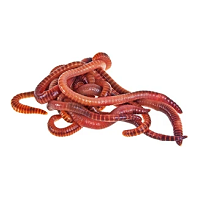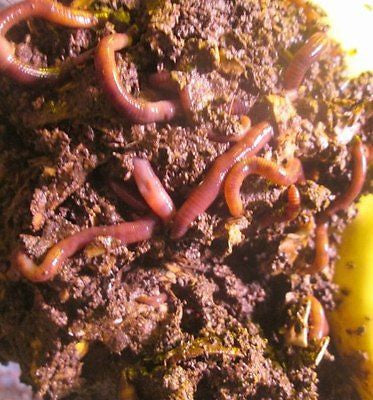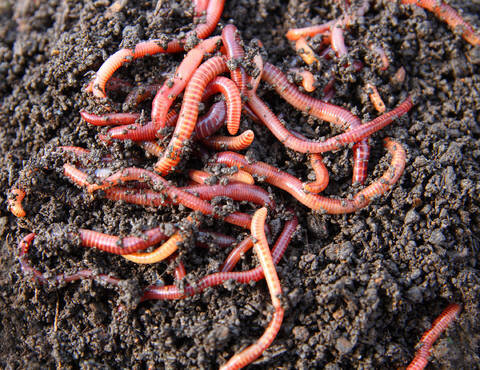Red worms: Find them online
Wiki Article
Change Your Yard With Red Wigglers: Tips and Tricks
Red wigglers are not simply a curiosity for compost enthusiasts; they are pivotal agents of makeover for any kind of garden. By establishing a fundamental worm bin and comprehending the dietary demands of these impressive animals, gardeners can substantially boost soil quality and plant health. The process of converting organic waste into rich, fertile spreadings is both simple and gratifying. Nevertheless, truth possibility of red wigglers exceeds plain composting. Exploring the nuances of their treatment and the diverse applications of their byproducts can unlock also higher benefits for your horticulture ventures.
Advantages of Red Wigglers
Red wigglers, medically referred to as Eisenia fetida, are frequently hailed as nature's composting champions. These impressive worms serve a number of crucial benefits that can dramatically enhance yard wellness and productivity. To start with, they are reliable decomposers, breaking down natural product such as kitchen scraps and yard waste into nutrient-rich vermicompost. This natural plant food improves the soil, promoting healthy plant growth and boosting soil framework.
Another noteworthy advantage of red wigglers is their capacity to reduce waste. By composting organic products that would or else add to land fill waste, they play a crucial role in lasting horticulture methods. Integrating these worms right into your gardening routine can lead to enhanced returns, much healthier plants, and a more vivid yard atmosphere, making them indispensable allies for gardeners looking for to enhance their environmental impact.
Establishing a Worm Bin
Producing a worm container is an essential step for any individual looking to harness the benefits of red wigglers in their gardening initiatives. An ideal worm bin can be made from various materials, consisting of plastic containers, wood crates, or commercially offered worm containers. The initial factor to consider is size; a bin that is at least 2 feet large, 3 feet long, and 1 foot deep is usually ideal for a small to medium variety of worms.It's important to develop a bed linen layer, utilizing materials such as shredded newspaper, cardboard, or coconut coir to provide a comfortable environment for the worms. The bedding ought to be moist yet not soggy, looking like a wet sponge - red worms.
Place the bin in a location that keeps a regular temperature level, ideally in between 55 ° F and 77 ° F. Avoid straight sunshine or extreme cold, as these conditions can harm the worms. As soon as the container is established, enable the bedding to choose a few days prior to presenting the red wigglers, ensuring they have a flourishing environment in which to prosper.
Feeding Your Red Wigglers
As soon as the worm bin is established and the red wigglers are presented, proper feeding comes to be crucial to maintaining a healthy and balanced worm population. Red wigglers grow on a varied diet plan, primarily being composed of kitchen scraps and natural materials.When introducing food, slice the scraps right into smaller items to facilitate quicker usage. In addition, bury the food below a layer of bed linens material to avoid fruit flies and various other nuisances. Screen the feeding regularity; a basic rule is to give food every 1-2 weeks, relying on the number of worms and the quantity of food waste produced.

Gathering Worm Spreadings
Exactly how can you tell when it's time to harvest worm castings from your container? The readiness of worm spreadings is suggested by a few key indicators.An additional indicator is the decrease in worm activity; as the castings gather, worms often tend to migrate towards fresher food resources. If you observe a decline in worm movement and the visibility of spreadings at the bottom of the bin, it's a clear signal that harvesting schedules.
To gather, gently dig the castings, taking care to decrease disruption to the worms. A popular approach includes separating the spreadings utilizing light; worms tend to delve away from the light, allowing you to gather the castings extra quickly.
Harvesting regularly, about every three to 6 months, makes sure a continuous supply of this nutrient-rich modification for your gardening endeavors. Keep in mind, the quality of your spreadings directly affects the health of your plants.
Making Use Of Castings in Your Garden
(red worms for composting)Utilizing worm castings in your garden can considerably improve dirt health and plant growth - red worms. These nutrient-rich natural fertilizers offer necessary macro visit this page and trace elements, enhancing the overall fertility of your dirt. By incorporating worm spreadings into your yard beds, you can advertise advantageous microbial task, which helps in vitamins and mineral schedule and boosts soil frameworkTo use worm castings successfully, blend them right into the leading few inches of soil before growing. You can develop a nutrient-dense fluid fertilizer by steeping worm castings in water for a week, after that using the resulting "worm tea" directly to your plants.
Worm castings also improve wetness retention within the dirt, decreasing the requirement for constant watering. Frequently including worm castings into your gardening routine can lead to robust plant growth, raised yields, and an overall healthier yard ecosystem.
Final Thought
By establishing a worm bin, supplying ideal food, and regularly collecting nutrient-rich castings, gardeners can promote a lasting environment. The use of worm castings and "worm tea" even more contributes to moisture retention and nutrient availability in the dirt.Report this wiki page